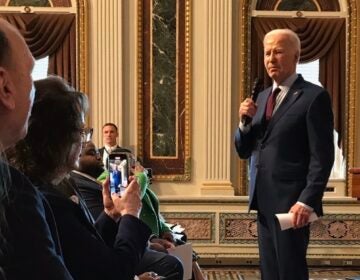Senate committee questions Dow/DuPont merger

Tim Hassinger
The Dow/DuPont merger’s impact on farmers and other customers was up for discussion Tuesday in the Senate Judiciary Committee in Washington, DC.
There are still a number of hurdles for the merger of Delaware-based DuPont and Dow Chemical. Among those hurdles is questions about the impact the combined chemical company will have on customers and competition.
U.S. Senator Chris Coons, D-Delaware, was among Judiciary Committee members to question company leaders. “Can you just briefly reassure consumers or farmers that this won’t lead to an anti-competitive outcome?” Coons asked DuPont Executive Vice President for Agriculture James Collins. Collins responded that a focus on customers would remain a “central pillar” to the newly merged company.
Roger Johnson of the National Farmers Union also testified at the hearing. He was concerned about the fact that while separate, Dow and DuPont are major competitors, and when combined, that combination would be eliminated. “You likely reduce choice [for farmers buying seed] as a result of that,” Johnson said. “That’s a really, really big challenge.”
Collins, who would become the head of the combined companies agriculture business, said competition will remain after the merger. “As a combined company, we enhance innovation competition across the industry,” Collins said.
Dow and DuPont aren’t the only agricultural chemical giants planning mergers, and neither were they the only companies at Tuesday’s Senate hearing. Bayer’s agreement to buy Monsanto and the proposed deal between Syngenta and the Chinese state-owned Chem-China add up to a major consolidation in the industry.
That consolidation raises concerns for Dr. Diana Moss of the American Antitrust Institute, who also testified at the hearing. “Once merged, Dow/DuPont and Monsanto-Bayer would be a duopoly, controlling a large portion of the corn and soybean markets,” Moss said. “Evidence shows that corn and cotton prices are higher under vertical integration. It is also harder for smaller rivals to compete.”
WHYY is your source for fact-based, in-depth journalism and information. As a nonprofit organization, we rely on financial support from readers like you. Please give today.





